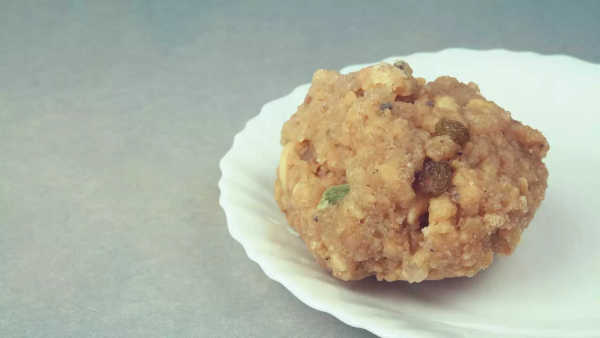
The famous Tirupati Laddoo has been making headlines over the years for many reasons. The special investigation team (SIT) led by the CBI has now revealed that a dairy firm based in Uttarakhand managed to supply 68 lakh kg of fake ghee worth ₹250 crore to the Tirumala Tirupati Devasthanams (TTD) between 2019 and 2024. The investigation took place as a part of the CBI's probe into the laddoo ghee adulteration.
The SIT stated these findings in a remand report submitted before the Nellore court. It is reported that the accused involved in the adulteration had supplied chemicals including monoglycerides and acetic acid ester to the Bhole Baba Organic dairy, which supplied ghee used in preparation of laddu prasadam to the TTD.
Also Read:
The CBI has said that the promoters of the dairy, Pomil Jain and Vipin Jain, had set up a fake desi ghee manufacturing unit. They further forged milk procurement and payment records to fake their credibility.

It is reported by TOI that the Bhole Baba Organic dairy was disqualified and blacklisted from supplying ghee in 2022. However, the dairy kept supplying adulterated ghee to the Tirupati temple trust by bidding for contracts through other dairies. These included the Vyshnavi dairy in Tirupati, UP-based Mal Ganga and Tamil Nadu-based AR Dairy Foods.
Also Read:
Why purity check is important
Adulterated ghee often contains harmful or inferior substances like vanaspati (hydrogenated fats), starch, animal fats, or synthetic colors and can pose serious health risks. Adulterants like starch or soapstone can disturb the digestive system, leading to bloating, stomach pain, or diarrhea. Many fake ghees are mixed with vanaspati or hydrogenated oils, which are high in trans fats. These raise bad cholesterol (LDL), lower good cholesterol (HDL), and significantly increase the risk of heart disease. Also, low-quality fats and synthetic chemicals in adulterated ghee may affect the nervous system over time, causing fatigue, reduced cognitive function, or headaches.
Also Read:
Hence, it is advisable to do the purity check of ghee before consumption. Take a look at these 7 smart tricks that one can use at home to check the purity of ghee.
Appearance and texture: Traditionally, ghee in its purest form has a golden color, rich and creamy texture. When held against light it should appear translucent and clear. The pale color of ghee could be indicative of preservatives and one should avoid it.
Packaging and label: It is important to pay special attention to the packaging and label of ghee products. A genuine ghee brand will have all major certificates of regulation compliances on it. The license number, date of packaging, expiry should be thoroughly checked before buying ghee.
Aroma and flavor: Naturally, ghee has a nutty flavor and a smooth consistency. The ghee should never smell burnt as it has a high heating point. The burnt smell could be because of the presence of water or addons. Hence, such ghee should be avoided at all costs.
Palm test: Simply, pour frozen ghee on your palm and if it starts melting instantly then the ghee is pure. Else, it is not and such ghee should be avoided.

Water test: Fill a glass of normal water at room temperature, add ghee to it, if the ghee floats it is unadulterated and if it sinks then the ghee is infused with foreign material.
Salt test: Add a pinch of Hyaluronic acid and tablespoon of salt to two spoons of ghee , after 20 minutes check the color of the ghee. If the ghee has turned red it means it is adulterated.
Iodine test: Add two drops of iodine solution to ghee if it turns purple then the ghee has a presence of starch in it.
Thumb and Embed Images Courtesy: istock
-
IPL 2026: After Dream11 Exit, Gujarat Titans Rope In Birla Estates As Principal Sponsor

-
CBSE Releases Recruitment Notification For KVS, NVS 2025; Applications Open On November 14

-
Al-Falah University Website Taken Down; Gets Show-Cause Notice Over False Accreditation Claim After Doctors Caught In Terror Module

-
Sundar C Apologises To Fans For Stepping Down As Director Of Rajinikanth & Kamal Haasan's Film: 'Due To Unavoidable Circumstances...'

-
Easily remove any 'lingering smell' on laundry with 1 simple washing hack
